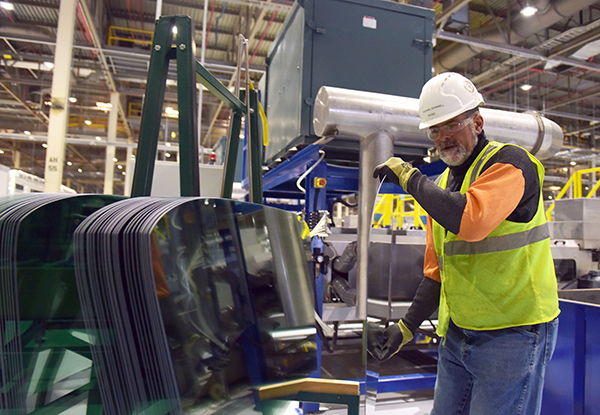
Financial Times writes that Chinese companies invested a record $45.6bn in the US in 2016 despite a presidential campaign heavy on Beijing bashing. But Donald Trump's imminent arrival in Washington is among factors making the feat unlikely to be matched this year, according to a new report.The surge in Chinese foreign direct investment into the US documented by Rhodium Group, a research firm, led the annual flow of corporate acquisitions to triple over 2015 levels. It also took the stock of China's long-term investment in physical assets over $100bn for the first time, with Chinese companies now employing more than 100,000 people in the US. The increase in Chinese investment highlights the changing nature of the economic relationship between the US and China. For decades, US-based multinational companies have been building factories and making other substantial investments in China. But little direct investment has flowed the other way, although Beijing has parked trillions of dollars of its foreign exchange reserves in US Treasuries.
- Reuters reports that China will not allow anyone to use Hong Kong as a base for subversion against mainland China or to damage its political stability, Beijing's top official in the territory told state television.Chinese leaders are increasingly concerned about a fledgling independence movement in Hong Kong, which returned to mainland rule in 1997 with a promise of autonomy known as "one country, two systems", and recent protests in the city. In an interview with state television broadcast late on Sunday, Zhang Xiaoming, the head of China's Liaison Office in Hong Kong, said Beijing will not interfere in matters that purely affect Hong Kong's autonomy. "As far as Hong Kong is concerned, nobody is permitted do anything in any form that damage the country's sovereignty and security, they are not allowed to challenge the central government's authority or that of Hong Kong's Basic Law, they are not allowed to use Hong Kong for infiltration subversion activities against the mainland to damage its social and political stability," Zhang said.
Financial Times reports that China has tightened checks on citizens exchanging foreign currency in anticipation of renewed downward pressure on the renminbi in the new year.Banks have been asked to improve standards for verifying customers' identities and to report "large or questionable transactions", the State Administration of Foreign Exchange (Safe) said in a public statement at the weekend. "There have been leaks in China's system of personal foreign exchange purchases," the statement said, giving as an example the way individuals and companies avoid capital controls on overseas investments by disguising their transactions as goods purchases. China's policymakers have clamped down on capital flows leaving the country in recent weeks, imposing fresh restrictions on outbound corporate acquisitions and investments. European companies have reported difficulties in remitting dividends to stockholders abroad. The restrictions are partly an attempt to keep the renminbi from steep falls in the future after it depreciated almost 6 per cent against the dollar in 2016.
- 2016-12-23 In China's Tiny Catholic Community, Hopes Rise For Beijing-Vatican Ties
- 2016-12-22 Trump taps China trade critic Navarro for new White House post
- 2016-12-21 On China: A Conversation With Larry Summers
- 2016-12-20 Smog Chokes Chinese Cities, Grounding Flights, Closing Roads
- 2016-12-19 Donald Trump’s Shock Doctrine Will Make China Even Stronger
- 2016-12-18 Tensions Linger Over Seizure of Survey Drone in South China Sea
- 2016-12-16 Japan Dethrones China as Top U.S. Foreign Creditor
- 2016-12-16 Japan Dethrones China as Top U.S. Foreign Creditor
- 2016-12-15 Is Trump Starting Something With China He Can’t Finish?
- 2016-12-14 For Tillerson, South China Sea Storms Aren’t New
- The Hill Trump on meeting Taiwan's president: 'We'll see'
- Wall Street Journal Chinese Access to US Semiconductor Industry May Be Curbed
- Reuters Twitter China head Kathy Chen leaves company
- Bloomberg China's Factories and Services Cap Year of Gains as Prices Surge
- The Telegraph China launches freight train to Britain
- The Washington Post China's leaders worry about Hong Kong independence movement
- Reuters China should set more flexible GDP growth target in 2017: central bank adv...
- www.npr.org China Says It Will Shut Down Its Ivory Trade in 2017
- Financial Times China shakes up 2000-year-old salt monopoly
- Financial Times Renminbi faces confidence test as Chinese FX purchase quota resets
- Reuters China's new rule on yuan transfers not a capital control measure - Xinhua
- Reuters Beijing enjoys brief respite, but choking smog to return on Tuesday
- www.hollywoodreporter.com China Box Office Growth Slowed to 3.7 Percent in 2016, Official Data Shows
- Reuters China jails 67 people for involvement in mafia-style gang
- Forbes South China Sea: Japan And Taiwan Send Their Own Strong Messages To Beijing
- Financial Times Trump, Putin, Xi and the rise of nostalgic nationalism
- The Washington Post Yes, Taiwan wants 'One China.' But which China does it want?
- New York Times In Banning Ivory Trade, China Saw Benefits for Itself, Too
- CNBC Why China might have a homegrown populism problem of its own in 2017
- Wall Street Journal China Embarking on a Financial High-Wire Act
- Forbes Is Trump Responsible For China's Cash Squeeze?
